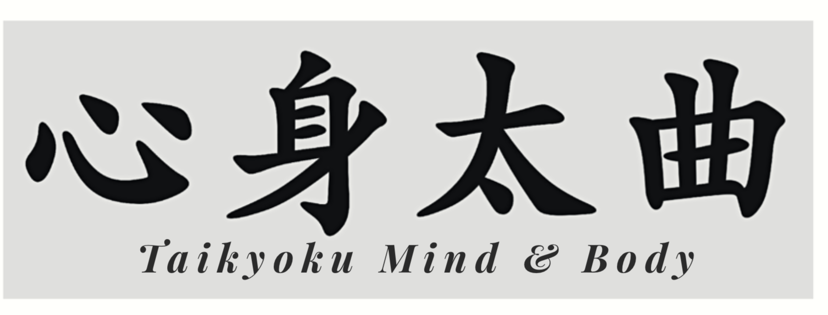Originally conceived as Taikyoku Aikido in early 2003 by Ellis Amdur for a training group he was consulting at an aikido dojo in Central Pennsylvania, the Taikyoku (great themes) framework is based on Amdur’s observation that all classical aikido techniques conform to one of five themes of movement, five force vectors, reflected in that art’s ikkyo through gokyo techniques. Jevin Orcutt and Budd Yuhasz became training brothers at that aikido dojo in 2003, finding a common passion for the Taikyoku Aikido practice. Eventually, Budd and Jevin became the only two persons to test through the ranks to achieve shoden licenses in Ellis Amdur’s Taikyoku Aikido. Over the years, Budd and Jevin experimented with, tested, refined, and expanded on the principles of Taikyoku Aikido, condensing what was originally intended to be an ‘open source study’ into an effective and powerful form of aikido.
In early 2008, Mike Sigman visited the dojo to teach an internal strength (ki/kokyu) workshop, at which time Budd Yuhasz decided that he’d found the mysterious strength he wanted to power his aikido practice. Over time, Budd began merging his internal strength practice with the Taikyoku framework, turning the Taikyoku Kuzushi (the solo training exercises of Taikyoku Aikido) into what is essentially a qigong practice (Taikyoku Kiko). After cross-training in multiple striking and grappling disciplines, Budd Yuhasz discovered that the Taikyoku principles driven by internal strength are universally applicable at all empty-hand combative ranges and within any context of necessary force. Through this realization, Taikyoku Budo was born.
Eventually, the aikido dojo Budd and Jevin were training at abandoned the Taikyoku Aikido training method. Around this time, Budd Yuhasz moved to Buffalo, NY where he continued to refine Taikyoku Budo through an intense dedication to his internal strength practice, while also cross-training at different dojo to test his skills. Jevin Orcutt began a Taikyoku Aikido study-group in Carlisle, PA and began training in in Ono-ha Itto-ryu Sokaku-den, a koryu (classical Japanese martial tradition).
Robert Van Valkenburgh began training in traditional hapkido under Joe Sheya in 1999, eventually attaining a rank of yidan, and had experienced moments of mysterious strength at Mr. Sheya’s hands. Over the years, Robert asked his teacher how he had acquired such skills and was told that it was a combination of his hapkido practice, qigong, tai’chi, a variety of breathing and meditation practices shown to him by different teachers, as well as an epiphany he’d had at the hands of hapkido founder Choi Yong-sul. With more questions than answers, Robert eventually reached out to Ellis Amdur who had been researching the mysterious strength of Daito-ryu aikijujutsu founder Takeda Sokaku and aikido founder Ueshiba Morihei. Through this dialogue, Mr. Amdur suggested that Robert look up Budd Yuhasz. Coincidentally, at this time, Robert had also been in a separate but related discussion with Mike Sigman who also recommended that Robert seek Budd out.
Inspired by Joe Sheya’s advice to find an internal practice congruent with hapkido, in late 2013 Robert traveled to Buffalo, NY to meet and train with Budd and immediately began incorporating the Taikyoku practices into his hapkido, which he was teaching at a Mixed Martial Arts academy outside of Annapolis, MD. Robert’s training group eventually moved to a semi-private dojo in Severna Park, MD called Seiya Dojo (an homage to Joe Sheya, Robert’s first inspiration).
In 2014, Budd, Jevin, and Robert all attended a seminar with Ellis Amdur in Pittsburgh, PA. At this seminar and at Mr. Amdur’s suggestion, the three of them began discussing the idea of a formal association around the Taikyoku concept, wherein the Taikyoku framework would remain open source for anyone who was interested in it, with the internal strength practices being more proprietary to those who would join the association as time went on.
Sadly, later in 2014, Robert’s teacher Joe Sheya passed away suddenly. Approximately one year later, Budd, Jevin, and Robert officially formed the Taikyoku Budo association. Realizing the limitations of having a martial-only practice in Taikyoku Budo, the three of them decided to begin developing the Taikyoku Kiko (qigong) solo movement practice separate from the Budō curriculum. In 2016, with Taikyoku Kiko as a personal practice for internal strength development, as well as overall health and wellness, and Taikyoku Budo as a group practice for people interested in the martial application of those internal strength principles, Taikyoku Mind & Body was born.
Robert Van Valkenburgh
Contact Taikyoku Mind & Body about Taikyoku Budo (jujutsu), Taikyoku Kiko (qigong), workshops, seminars, and private lessons.
[contact-form][contact-field label=’Name’ type=’name’ required=’1’/][contact-field label=’Email’ type=’email’ required=’1’/][contact-field label=’Interest? ‘ type=’checkbox-multiple’ options=’Martial Art (Budo),Movement Practice (Kiko),Both (Budo %26amp; Kiko),Seminars/Workshops’/][contact-field label=’Phone Number’ type=’text’/][contact-field label=’Comment’ type=’textarea’ required=’1’/][/contact-form]
